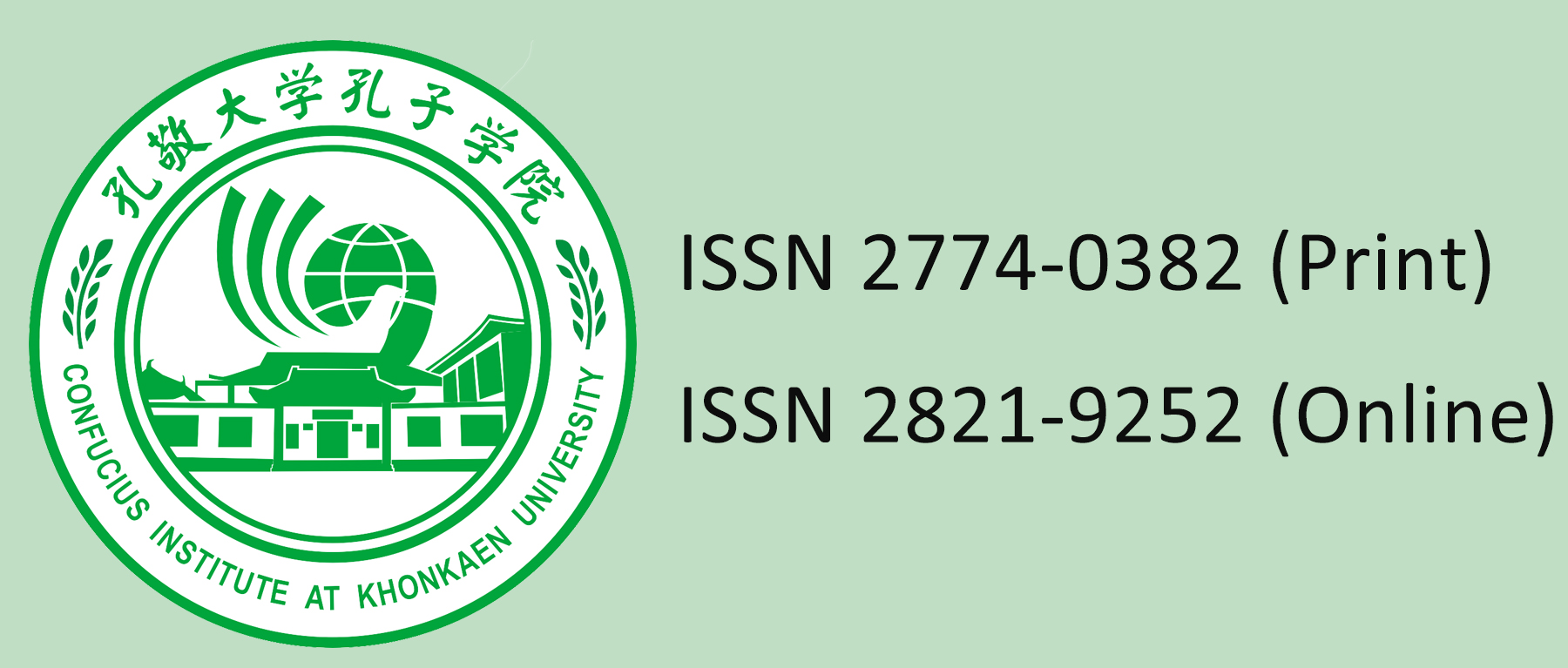The first issue of June 2022 is a special issue of the International Forum on Chinese Education in Asia.
The International Forum on Chinese Education in Asia was held on March 5, 2022, co-sponsored by the Confucius Institute of Prince of Songkla University in Thailand and the Confucius Institute at Khon Kaen University in Thailand, with the editorial board of the Journal of Sinology and Chinese Language Education as the supporting unit. The forum aims to promote academic exchanges between Asian countries in the field of Chinese language education under the new situation, and to discuss the theories and methods of Chinese language education in Asia in the post-epidemic era. Mr. Zhao Lingshan, Vice Chairman and Secretary General of China International Chinese Education Foundation, and Ms. Feng Junying, Education Counsellor of the Embassy of the People’s Republic of China in the Kingdom of Thailand, were invited to attend online and delivered opening and closing speeches respectively. Over 10 well-known experts and scholars from different counties gave online special reports and offline exchanges respectively on the Chinese language education in 12 countries of Asia, including Professor Li Yuming, Beijing Language and Culture University, Professor Furukawa Yutaka, Osaka University in Japan, Professor Ik-sang Eom, Hanyang University (Seoul) in South Korea, and Professor Kanokporn, Kasetsart University in Thailand. The Journal of Sinology and Chinese Language Education has collected the expert contributions from the conference presentations and offline exchanges of this forum and published them in this special issue for the benefit of readers.
In the article, The Advantages and Disadvantages in Learning Mandarin to the Speakers of Korean, Ik-sang Eom compared and analyzed the similarities and differences between Korean and Chinese in terms of text, vocabulary, pronunciation, language type and cognition from the perspective of comparative linguistics, and then discussed the advantages and disadvantages of Korean native speakers in learning Chinese.
In Guo Fuliang and Chen Guihua’s article, Study on Teaching and Analyzing Test Questions of Ungrammatical Structure in New HSK6, he conducted a statistical analysis of test question of ungrammatical sentences in new HSK level 6, examined the preparation and tutoring of Chinese learners, in order to help learners understand the characteristics of language diseases, master learning methods, and make suggestions for propositions and teaching counseling.
Kanokporn Numtong and Pan Lei in the article Research on Teaching Chinese-Thai and Thai-Chinese Translation of Thai Higher Eduecation, aimed to explore the teaching problems of the Chinese-Thai and Thai-Chinese translation courses in Thai higher eduecation. They pointed out that translation teaching should focus on the combination of theory and practice of course content when students’ knowledge came to a certain level and put forward specific and feasible solutions.
Yang Wenbo and Ma Lijuan, Preparation and Application of Local Teaching Textbooks for “Chinese + Tourism” in Thailand, took Travel Around Thailand (Chinese-Thai Bilingual Version) as an example, detailed the concepts, principles, methods, and examples of the preparation of Chinese textbooks of “localization + special use” and introduced the construction and application of three-dimensional resources of the textbooks.
In the article A Comparative Study of Chinese Majors in Three Universities in Vietnam, Nguyen Dinh Hien selected three representative colleges and universities in Vietnam to compare similarities and differences in terms of curriculum setting, credit distribution, and time arrangement, and put forward suggestions for improvement on this basis.
Amin Bazrafshan and Reza Mirzaei Barzoki conducted the research——Bias Analysis of “Bǎ(把)” Structure of Persian Language Learners, through questionnaire surveys, statistics, and analysis of the bias types of Persian native language learners when learning “Bǎ” sentence structure, combined with the syntax of “Bǎ” sentence structure, semantics, and the comparison of Persian and Chinese languages to analyze the bias.
In the article Research on Development Strategies of Chinese Language Education in Bangladesh, Zhou Weiwei reviewed the education situation of Chinese in Bangladesh and proposed to explore the development strategy of Chinese teaching, the strategy of promoting and disseminating Chinese education, the strategy of cooperation and development of Chinese educational institutions, and the strategy of international Chinese education research.
Meng Guangjie, in Study on the Learning Motivation of Filipino Chinese Learners from the Perspective of Language Economy, proposed that we should pay attention to the learning motivation of learners for the purpose of obtaining the economic benefits of Chinese, quantify learning objectives, and combine the “Chinese + vocational education” model to promote the localization of international Chinese education in the Philippines.
In Current Status, Trend and Difficulties of Chinese Education in Laos, Zhang Minghu and Zhao Shengnan pointed out that Chinese education in Laos has a good development trend and a good social environment, but there are also many problems and challenges. They also explained and analyzed the development status, existing problems, and future trends of Chinese language education in Laos.
Zhang Mengshi in her article, A Case Study of the Initial Consonant Pronunciation Mɑde by Thai Students Based on the Praat, conducted experiments via Praat software on the aspects of the vocal state, pronunciation mode, and airflow strength, analyzed the initial consonant mispronunciation of Thai Chinese learners, pointed out that the type of mispronunciation was turning voiceless consonants into voiced and wrong pronunciation method, also pointed out the causes of errors in the end.
Published: 2022-06-25


